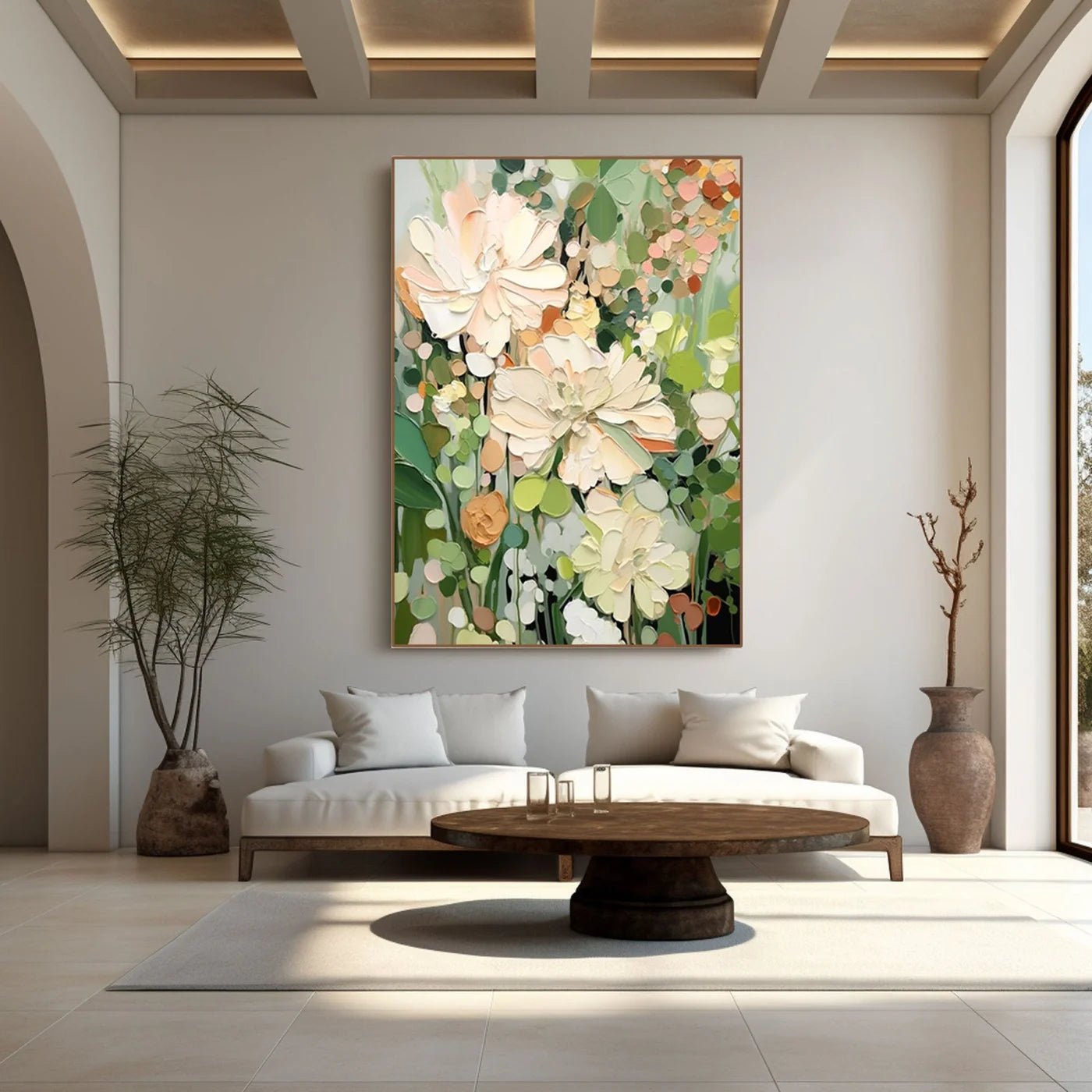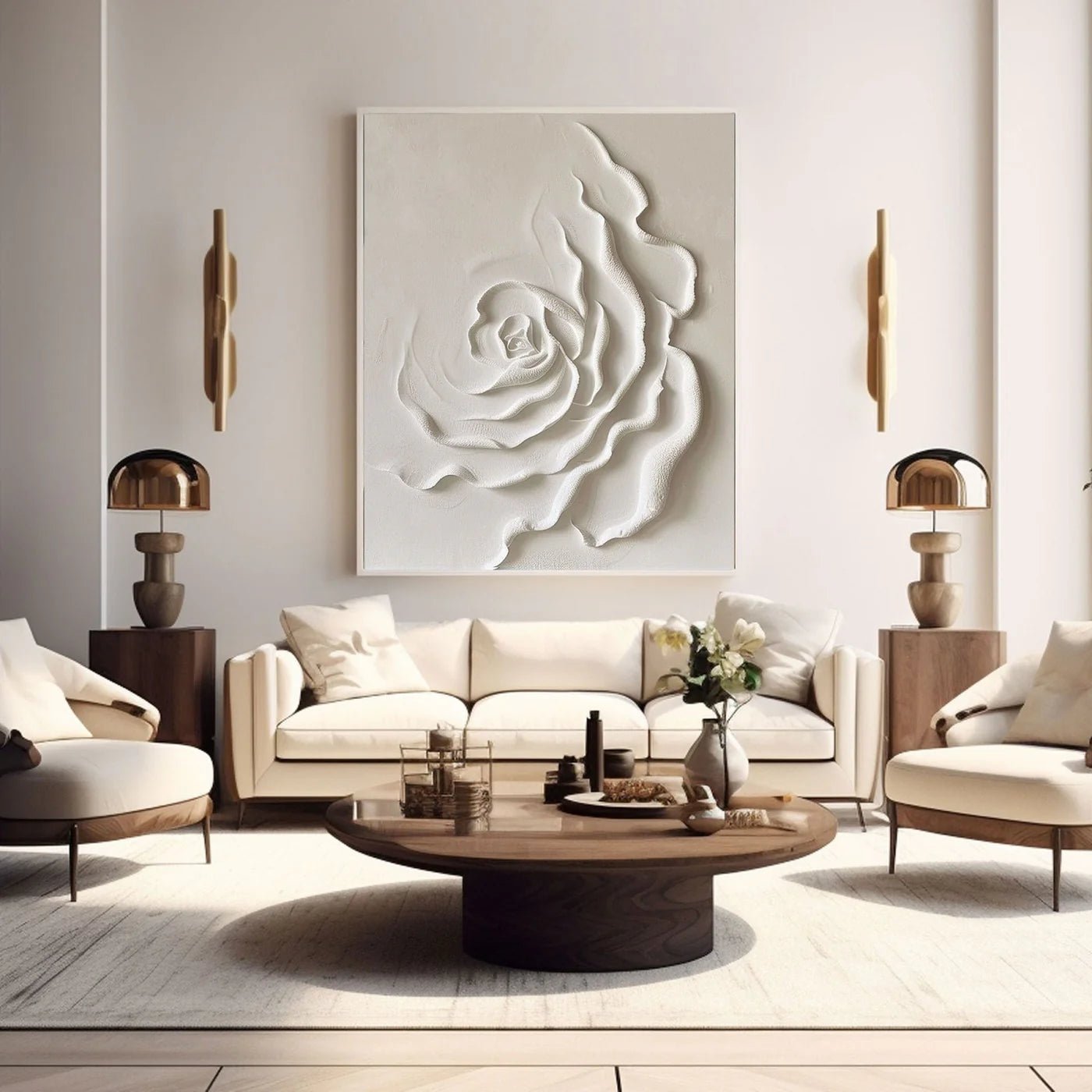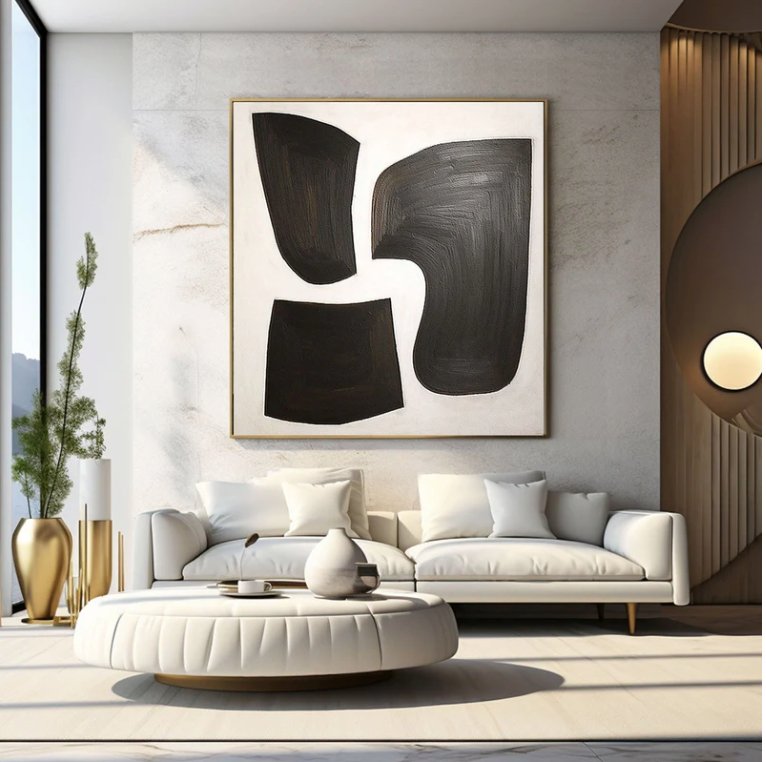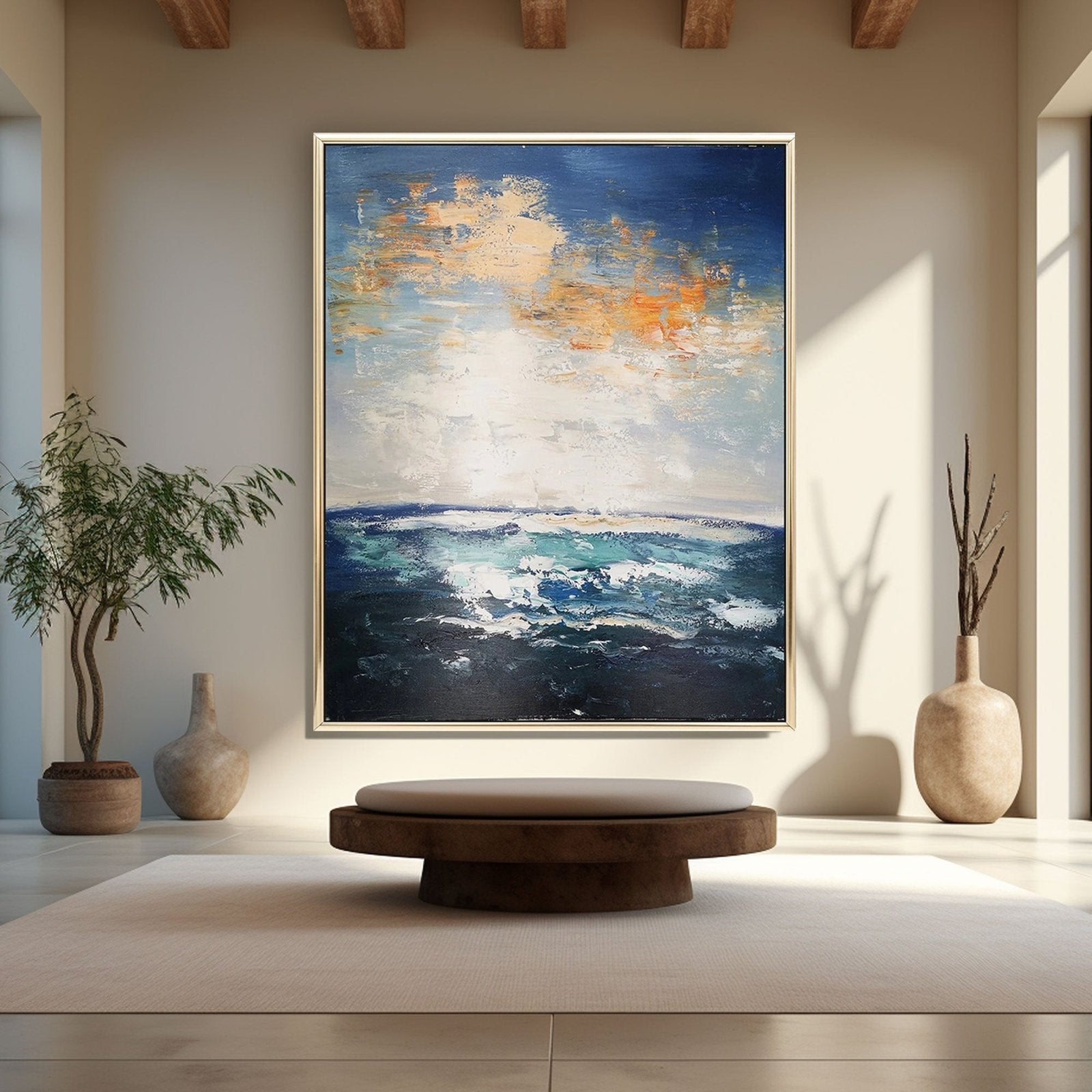
Que signifie Wabi Sabi
Le concept de wabi-sabi est ancien et trouve son origine dans la tradition japonaise. Il s'agit d'accepter les imperfections et les défauts de la vie. L'instinct qui nous pousse à rechercher les défauts des objets ou des choses qui nous entourent influence notre perception esthétique.
Le concept de wabi-sabi repose sur l'idée que toute belle chose a un défaut, et de nombreuses personnes l'intègrent aujourd'hui à divers aspects de leur vie. Il prend même une place importante dans la décoration intérieure moderne, et on retrouve des éléments de style wabi-sabi dans de nombreux intérieurs. Examinons de plus près le concept de wabi-sabi.
Qu'est-ce que le Wabi-Sabi ?
Le Wabi-Sabi est un concept qui englobe le design, l'art, la culture, les émotions et la philosophie japonais. Ce concept repose sur le principe que les imperfections peuvent aussi exprimer la beauté. Autrement dit, quelque chose qui n'est pas parfait ou qui présente des défauts peut aussi posséder une certaine beauté naturelle.
Ceux qui ont déjà visité le Japon ont peut-être découvert que ce peuple apprécie la beauté naturelle des choses, qu'elles soient animées ou inanimées. Il n'est pas rare de trouver des paysages brumeux, des meubles wabi-sabi moulés ou des bols cassés dans une maison japonaise ordinaire.
Les Japonais croient en effet que tout dans la vie, animé ou inanimé, finira par s'altérer avec l'âge. Ils croient qu'avec l'âge vient la beauté. Même usés par le temps, les murs ou la vaisselle conservent leur charme élégant et contribuent à l'environnement.
Le terme Wabi-Sabi est issu des mots japonais Wabi, qui signifie « moins, c'est plus », et Sabi, qui signifie « mélancolie attentive ». Le concept wabi-sabi prône la conscience humaine de la nature éphémère des choses terrestres et de la beauté qui en découle, révélée par l'impermanence.
L'esthétique contemporaine tend à privilégier la perfection et la complexité. Cependant, l'art wabi-sabi embrasse l'impermanence, l'imperfection et la simplicité. Il existe donc un contraste entre l'esthétique contemporaine et l'art wabi-sabi.
Wabi-Sabi L'art se présente comme une alternative au monde moderne, rapide, artificiel et produit en série. Il nous rappelle de ralentir et de savourer la beauté simple et naturelle qui nous entoure.

La philosophie derrière le Wabi-Sabi
La philosophie du wabi-sabi trouve son origine dans deux grands récits japonais. Le premier nous ramène à l'ancienne cérémonie du thé japonaise. À l'époque, au XIVe siècle, la cérémonie du thé était un événement majeur au Japon.
Au début de la tradition, des objets très luxueux aux formes parfaites étaient importés de Chine pour la cérémonie. Cependant, un moine zen, Murata Shuko, développa plus tard une version simplifiée de la cérémonie du thé. Sa version consistait à servir le thé avec des ustensiles artisanaux locaux. Ces objets artisanaux présentaient de nombreuses imperfections.
Au début, beaucoup n'adoptèrent pas cette version. Cependant, au XVIe siècle, la situation changea. Un maître nommé Rikyu décida de remplacer ses luxueux services à thé chinois par des produits fabriqués localement. De plus, il installa son pavillon de thé dans un lieu qui ressemblait à une maison paysanne. Voici la première histoire.
La deuxième histoire est également similaire à la première. Dans celle-ci, Sen no Rikyu a joué un rôle essentiel dans l'adoption de la culture wabi-sabi. Le moine souhaitait apprendre les cérémonies ancestrales du thé auprès d'un maître, qui lui a demandé de s'occuper d'un jardin pendant le processus.
Alors que Rikyu s'apprêtait à présenter sa mission à son maître, il secoua un cerisier du jardin et des fleurs de sakura tombèrent au sol. L'imperfection capturée dans cette courte scène apporta une nouvelle ambiance à la pièce et marqua le début du concept wabi-sabi au Japon.
Les poteries japonaises Raku et Hagi sont d'excellents exemples de design wabi-sabi. La poterie Hagi présente des couleurs neutres et des formes simples, tandis que la céramique Raku, fabriquée à la main, présente des teintes sombres et un aspect irrégulier, rugueux et craquelé.
Le développement artistique des pierres sèches de jardin et du kintsugi (technique consistant à utiliser l'or pour réparer les objets brisés) est également une application moderne de l'art wabi-sabi. Attirer l'attention sur les défauts d'un objet est une façon de l'honorer et de le valoriser. Dans le contexte du kintsugi, la rupture symbolise la régénération en la mettant en valeur plutôt qu'en la cachant. Elle représente le début d'un nouveau cycle.
Éléments clés du Wabi-Sabi
Certains des principes fondamentaux du concept wabi-sabi incluent :
● Simplicité
Il y a toujours une part de beauté, même dans les choses les plus simples. La simplicité est l'un des éléments fondamentaux du concept wabi-sabi. Cette culture affirme que la complexité n'est pas nécessaire en toute chose et qu'une beauté naturelle émane des choses simples.
● Le passage du temps
Un autre élément clé du concept wabi-sabi est qu'il suit l'ordre naturel du vieillissement. Autrement dit, les choses sont censées vieillir et s'user avec le temps. La culture considère que tout devient plus beau avec l'âge.
Par exemple, dans de nombreuses régions du Japon, les gens négligent d'appliquer une nouvelle couche de peinture sur leurs murs lorsque celle-ci s'estompe, car ils apprécient la beauté du processus naturel de vieillissement. C'est ce qu'on appelle l'art mural wabi-sabi .
● Processus naturels
Les processus naturels sont également un élément clé de la culture wabi-sabi. Ce concept encourage à laisser les choses se produire naturellement. Par exemple, si un bol tombe de la table et s'écaille sur les bords, il s'agit d'un processus naturel qui illustre la beauté de l'art des textures wabi-sabi .
Intégrer le Wabi-Sabi dans la décoration intérieure
Voici quelques conseils pratiques utiles pour intégrer des œuvres d’art wabi sabi dans votre décoration intérieure :
Matériels
Pour que votre maison adopte un style wabi-sabi, les matériaux de construction, les objets décoratifs et le mobilier doivent être durables, écologiques et respectueux de l'environnement. Vous pouvez également intégrer des matériaux locaux lors de la construction pour approfondir la culture wabi-sabi.
Bien que les créations wabi-sabi nécessitent des matières premières locales, vous pouvez également introduire des matières nobles comme la soie ou le cuir dans vos œuvres texturées wabi-sabi. Veillez toutefois à les utiliser dans des tons ou des couleurs neutres, sans excès, afin de ne pas vous éloigner de la croyance fondamentale du wabi-sabi.
Texture
La texture est également un élément important à prendre en compte pour intégrer le style wabi-sabi à votre intérieur. Une œuvre murale texturée ne se limite pas à une toile . Vous pouvez également opter pour une œuvre blanche texturée ou utiliser des finitions murales pour ajouter une touche de texture. Si vous ne souhaitez pas de texture directe sur vos murs, vous pouvez simplement accrocher une peinture texturée sur le mur naturel pour introduire le style wabi-sabi.
Fonctionnalité et simplicité
Lorsque vous achetez des matériaux et des meubles pour votre maison, privilégiez des objets simples et fonctionnels, car c'est ce que prône la culture wabi-sabi. Les objets que vous utilisez chez vous doivent avoir un usage simple et ne pas être trop complexes. Par exemple, optez pour une simple table en bois pour les repas.
Produits connexes de Nuke Art
Voici quelques produits spectaculaires de Nuke Art que vous pouvez utiliser pour introduire la culture wabi-sabi dans votre maison :
1. Art abstrait vert
Les œuvres d'art abstraites aux tons naturels et terreux font merveille pour introduire des éléments du wabi-sabi dans votre intérieur. Les tons terreux et la texture de ces œuvres abstraites incarnent parfaitement les principes fondamentaux de la culture wabi-sabi.
L'art abstrait vert apporte une touche apaisante et organique à n'importe quel intérieur. Ces œuvres apaisent l'esprit et produisent des effets relaxants qui vous aident à apprécier la beauté de la nature qui vous entoure.

2. Peintures colorées
En général, les couleurs vives ne se marient pas bien avec une décoration wabi-sabi. Le wabi-sabi privilégie les tons naturels et terreux. Cependant, cela ne vous empêche pas d'introduire des textures colorées dans votre intérieur. Vous pouvez utiliser des couleurs vives, mais elles doivent être harmonieuses et équilibrées, tout en conservant leur imperfection.
Ces peintures colorées ajoutent une touche de caractère et d'originalité à votre décoration intérieure. Ajouter une touche de couleur à cet effet ton sur ton peut donner l'impression d'une belle imperfection.
Les bienfaits du Wabi-Sabi dans la vie moderne
La culture wabi-sabi présente de nombreux avantages pour la vie moderne. Parmi ceux-ci :
● Pleine conscience et appréciation
Beaucoup d'êtres humains aiment relever les défauts des choses. Parfois, cela peut être une bonne chose. Cependant, ce n'est pas toujours le cas. Le concept wabi-sabi nous apprend à être attentifs aux petites choses qui nous entourent et à exprimer notre appréciation, même dans l'imperfection.
● Durabilité et respect de l'environnement
La culture wabi-sabi est également bénéfique à la vie moderne en promouvant le développement durable et le respect de l'environnement. À notre époque où de nombreuses personnes à travers le monde accordent une grande importance à l'environnement et au développement durable, cet effet est incontestablement positif.
● Réduit le besoin de perfection
La culture wabi-sabi est également bénéfique dans le sens où elle réduit le besoin de perfection. Si les gens ne s'en préoccupent pas vraiment et apprécient même les objets imparfaits, de nombreuses vies seront plus détendues et épanouissantes. Elle encourage également des pratiques comme la réparation plutôt que le remplacement.

Conclusion
L'essence de la culture wabi-sabi réside dans la simplicité, l'imperfection et l'impermanence. Issue des cérémonies du thé au Japon, cette culture met l'accent sur la découverte de la beauté des choses simples, anciennes et imparfaites. Dans le monde trépidant d'aujourd'hui, le concept wabi-sabi encourage chacun à ralentir le rythme et à apprécier la beauté qui l'entoure.
Si vous cherchez où dénicher les plus belles œuvres en harmonie avec la philosophie wabi-sabi, Nuke Art est là pour vous. Explorez dès aujourd'hui notre magnifique collection sur notre site web pour trouver des œuvres d'art wabi-sabi uniques et étonnantes.




